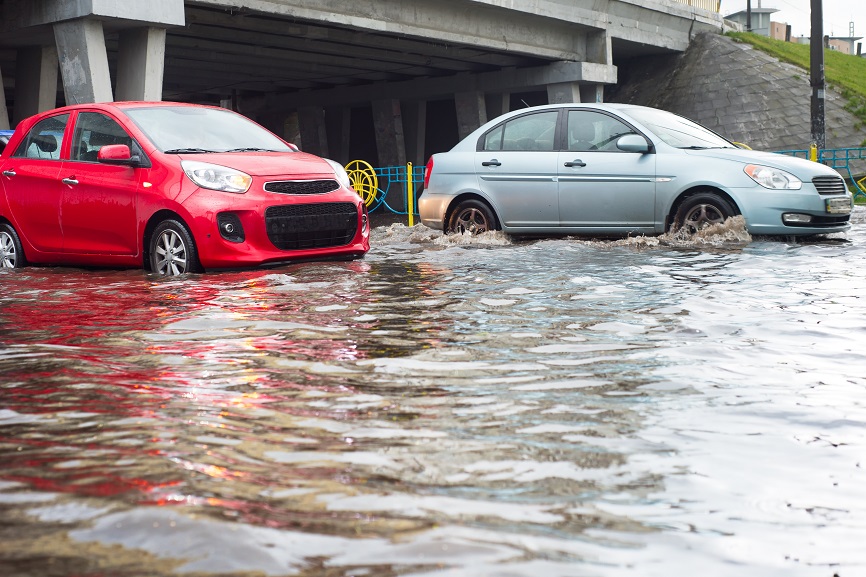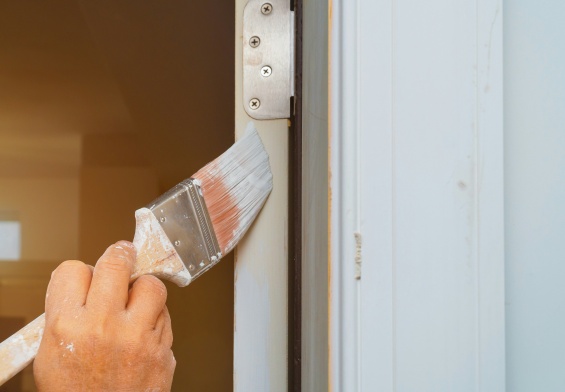Flooding can occur as the result of ocean waves coming on shore, heavy rains, rapid snow melts, or after a dam or levee break. Although we’ve often seen examples of houses flooding up to the rooftop, flood damage can result from only a few inches of water. Floods are also the most common type of weather-related natural disasters.
During flood season, heavy storms and natural disasters can lead to dangerous conditions that can wreak havoc across homes and properties. Moreover, because flooding is possible anywhere that experiences rainfall, it can occur in any state.
Destructive Nature of Flash Floods
Floods may occur within a matter of minutes, or they can also stretch out for days, weeks, or even longer. Flash floods, however, are the most destructive because they strike so quickly. They usually result from heavy rains that the ground cannot absorb or when the waters crest over riverbanks.
Because they happen so soon after heavy rainfall, people rarely have time to prepare or get to safety. Consequently, they often suffer a great deal of damage to their homes and property. In this case homeowners need to contact someone immediately about water mitigation and damage repair.
Flooding Season
Although there is no distinct flood season, the bulk of flooding in the U.S. takes place from the spring to the fall. While no state is completely safe, flooding can be more common at specific times of the year in different areas. In addition, flooding is more likely in areas that have seasonal rainstorms, desert topsoil, or coastal locations.
Early Spring
As spring takes hold, territories that received heavy snowfall during the winter are the most vulnerable to flooding, especially if they are near snow-covered mountains. The warmer temperatures can cause the snow to melt and flood nearby streams and rivers. In addition, construction and heavy development usually exacerbate the problem by removing water-absorbing vegetation and soil to make way for buildings and roads.
Spring and Summer
During late spring and early summer, seasonal thunderstorms, which can cause major flooding, are common to many areas of the U.S. And flash flooding is also prevalent during this time of the year.
Summer and Fall
As late summer approaches, flooding can occur in many coastal and surrounding inland areas, often as the result of seasonal tropical storms. States such as Florida, Louisiana, and Texas are known for bearing the brunt of severe hurricanes and other natural disasters. Anytime these events take place, it is crucial to contact emergency repair services within 24-48 hours to prevent additional harm to structures and valuables.
What Kinds of Areas Are Prone to Flash Floods?
- Heavily populated states like New Jersey –The amount of construction, highways, driveways, and parking lots in these states adds to the runoff by cutting down on the amount of rain absorbed by the ground. Often, streams that run through towns are directed underground into storm drains which can back up with debris during heavy rains and then flood nearby roads and buildings.
- Areas beside rivers – Because of the flood risk, embankments are usually built alongside rivers to keep high water from spilling over into neighboring land.
- Mountainous, hilly terrain – These areas can produce rapid water runoff, which causes rivers and streams to rise quickly. If the ground is rocky, much of the water will not be absorbed. This type of ground can quickly become saturated and lead to flooding. For this reason, camping by riverbeds can be dangerous if heavy storms are predicted.
Climate Change Impacting New Jersey Flooding
New Jersey is no strange to the impact of climate change when it comes to heavy storms and flooding. From 2005-2014, it is estimated that 70% of the coastal flooding days in New Jersey were the result of man-made climate change. As the Atlantic hurricane season yields more major storms, more people will be affected. As of 2021, over 350,000 people are at risk of coastal flooding in New Jersey, a number which is projected to grow by another 110,00 people by 2050 due to escalating sea levels.
For people in coastal towns, not only are their homes at risk, but any docks, moorings, or piers will take more of a beating from the extra storms and higher water tables. For this reason, marine construction contractors will now have to build to withstand more severe weather events in the future.
Each year floods kill more people in the United States than hurricanes, tornadoes, or lightning, and the Northeast is certainly no exception. Indeed, places like New Jersey now receive more than their fair share of severe storms and flooding. Moreover, they will have to account for the increase in weather-related disasters as the effects of man-made global warming continue to worsen.




